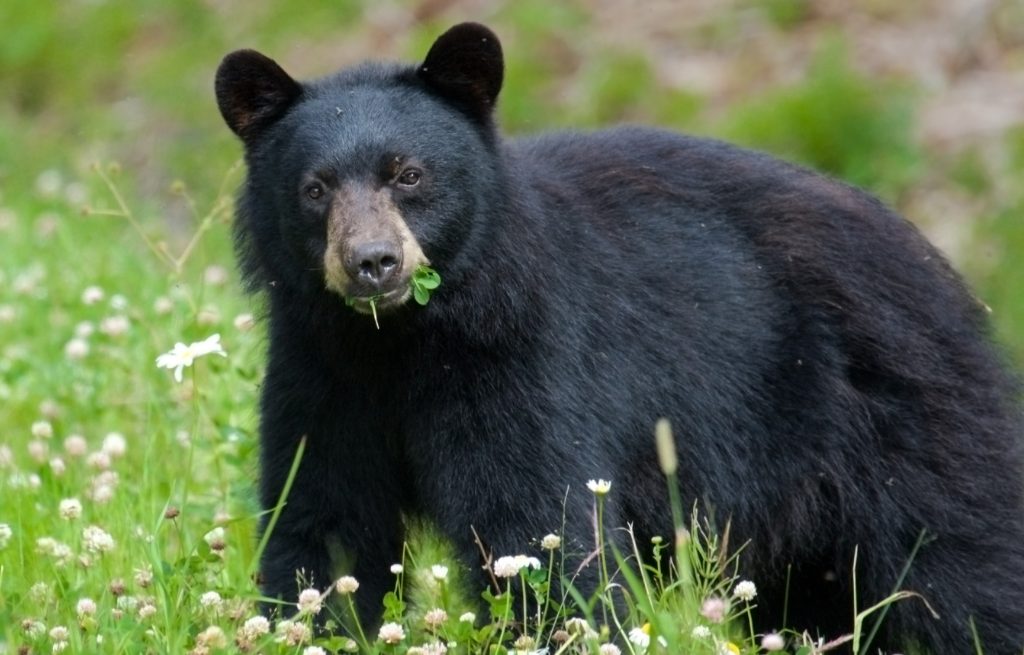Dog killed by bear in Jasper National Park, bear destroyed by rangers

Posted Apr 24, 2023 12:40 pm.
Last Updated Apr 24, 2023 3:06 pm.
Parks Canada says rangers have “destroyed” a black bear after one killed a dog at Jasper National Park Saturday.
Rangers say two people were walking their dogs off-leash on the Wabasso Lake Trail when they were approached by a black bear.
They then say one of the dogs chased the bear off the trail before it “quickly reversed the chase.”
Then, the bear came back to the hikers “within a couple of feet,” where the other dog was standing and barking, and proceeded to attack that dog.
One hiker used bear spray directly into the bear’s face at close range.
According to Parks Canada, the bear did not release the dog, which is when the hikers then used the bear spray can to “punch the bear in the head multiple times.”
The bear still did not release the dog and carried it into the woods.
“This close and aggressive approach by a large black bear is very concerning behaviour,” said Parks Canada in an update Monday.
“The attack on the dog and subsequent caching of the carcass indicates predatory behaviour.”
Parks Canada says human-wildlife conflict specialists responded and “closed trails” for an investigation and destroyed it on Sunday.
“Destroying a bear is a last resort. Parks Canada considers hazing first and foremost to deter bears from highly visited areas, and then considers trapping and relocation,” rangers said.
“In this unusual and concerning encounter, the large 204 lbs male bear, which had no identifying tags indicating previous interactions with Parks Canada personnel, displayed no fear or reaction to bear spray or punches.”
Rangers say the “non-typical” behaviour indicates a habituated bear and would have increased continued negative interactions.
“Our condolences go out to the pet owners involved in this incident. This is a sad reminder that all pets should be kept under control and on a leash at all times within a national park,” Parks Canada said.
The trails have since reopened, but Wabasso Lake Trail is closed at this time.
Parks Canada has reopened a number of trails after a black bear killed a dog this weekend. Wabasso Lake Trail remains closed.
— Jasper National Park, Parks Canada (@JasperNP) April 24, 2023
Be ‘bear aware’
In the meantime, rangers want to warn hikers to be “bear aware” while on trails.
Dan LeGrandeur, the owner of Bear Scare, says predatory attacks tend to come from black bears over grizzly bears, but people should still react to both in the same way.
“With defensive behaviour, they are either defending themselves because you surprised them, or defending their cubs, or defending a food source. And, of course, a predatory attack is where the bear has the intention of killing and eating it,” he told CityNews.
He says that 90 per cent of bear attacks, “especially with females with offspring’s, sows and cubs,” happen when a person has a dog with them.
“Because the sow will be protective of her young, and she’s not going to perceive the dog as anything different than a wolf or coyote because they have been known to kill bear cubs, so she’s going to perceive your dog to be the same.” LeGrandeur explained.
“In addition, the dog can also aggravate the situation, where the dog is barking, becoming very aggressive towards the bear, and sometimes the dog will bring the bear’s attention towards yourself.”
He says bear spray is highly effective, “more effective” than firearms, and that 98 per cent of people that carry bear spray are uninjured after encountering bears.
Tips to stay safe
Kim Titchener, the founder of Bear Safety and More, says there is a rising number of “defensive encounters” involving black bears and people approaching bears with an off-leash dog.
She tells CityNews there are a number of things hikers can do amid the call for bear safety.
“Avoid letting your dog off-leash. If you have a small child with you, pick them up or put them behind you, you’re going to pull your bear spray out and pull the safety off. If there are other people, group up, then you will access the situation.” she said.
Titchener says there are a number of signs to point to when it comes to leaving the situation.
“Does the bear have cubs? Do they have a food source? Is the bear showing signs of stress, huffing, puffing or doing any bluff charging at me? These are signs the bear is defensive, and I need to leave the area,” she said.
“So we will slowly back away and give the animal some space to let them know it is an accidental encounter. If the bear comes towards you, you are going to spray them with bear spray.”
In addition, she says bear spray is a last resort item, and should only be used if you encounter a bear, adding efforts should already be in place to avoid one.
“These animals can run at much higher speeds than humans. Higher than a quarter horse, faster than the fastest Olympic athlete, so leaving [bear spray] in a pocket, in the bottom of your backpack, in your truck door, it will be absolutely useless in those cases,” Titchener said.
Lastly, she says it’s important to avoid a bear encounter in the first place: “Make tons of noise, travel in groups, watch for signs of bear activity such as scat, tracks, overturned rocks. If you see a dead animal, leave the area.”
Parks Canada says to “report any unusual bear behaviour” to Parks Canada Dispatch at 780-852-6155.
More information on bear safety can be found online.








